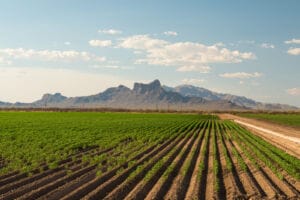DuringPollution Prevention Week, Gov. Douglas A. Ducey encouraged Arizona residents to save money, and help the environment by managing their waste in a sustainable manner.
“The history of pollution prevention week with the Arizona Department of Environmental Quality is that these types of activities are so important to our mission and what we do,” said Caroline Oppleman, media officer for the Arizona Department of Environmental Quality. “We have worked with not only Gov. Ducey, but prior governors to bring this to the public’s attention and hopefully get some recognition for pollution prevention.”
ADEQ hosted two webinars, which featured several speakers from companies and organizations that have already implemented the Pollution Prevention (P2) Planning Program. The P2 program requires Arizona businesses that use an excess of ten thousand pounds of toxic substances annually, to work with ADEQ to reduce toxic substances at the source. The webinars are also geared towards businesses that may not meet the threshold for requirement of the plan, but simply because they are interested in the benefits the program offers. The focus was aimed to create a dialogue for businesses and the general public about the advantages of implementing green technology and practices.
“The goal of the pollution prevention program is to get facilities to reduce their hazardous waste generation, or their toxic substance use,” said Linneth Lopez, an environmental engineer specialist, for ADEQ. “The added benefit of that is a lot of facilities that are doing this have seen the economic benefit. So basically they’ve reduced their hazardous waste and they have less of a liability on their end, because they don’t have hazardous waste generated and their employees are more secure because they don’t have to deal with those toxic substances.”
Andre Fuentes, a facilities and environmental supervisor for Frito Lay, discussed some of the benefits that P2 program had for his company.
“We had reduced costs of waste treatment and disposal of raw materials, saw more efficient use of raw materials, staff resources, equipment energy and water. Also, we met our environmental requirements, reduced potential environmental liabilities, saw improved protection of employee health, safety and improved the company’s relationship with public customs,” Fuentes said.
ASU has made several changes over recent years to become more sustainable and to reach its zero waste goal. Ellen Newell, the associate director of facilities management at ASU, who is responsible for landscape maintenance on the Tempe campus, was another speaker for the webinar. She discussed her role in switching from commercial to organic fertilizers at ASU.
“We started the switch to organic fertilizers in 2007. The university president, President Crow, was pushing sustainability, so we looked at our organization and what we were doing. We decided that we were paying to have green waste hauled to the land sale and at the same time, we were spending money buying commercial fertilizers. We thought this is crazy and if we can find a way to turn green waste into compost and then reuse it on the landscape, that’s more of a closed loop system,” Newell said.
The switch to organic compost has reduced high nitrate runoff and the new compost holds more water, allowing for less frequent watering of ASU’s flora. The original commercial fertilizers were also costing the school a daunting $12-13 thousand annually. ASU has also diverted close to a half-million pounds of plant clippings since 2007, which has saved the university about $20 thousand in dumping fees.
“Our department also runs a lot of our equipment on what’s called B99, which is 99 percent vegetable oil. The used fryer oil on campus is picked up from campus kitchens, as well as other places from the valley. A local company then turns the biodiesel into fuel,” Newell said.
Currently, over 300 facilities participate in ADEQ’s P2 program and it is expected to grow through global outreach, biannual presentations and online resources.
“We are providing a number of resources on our website for P2 week that are geared towards schools, and different things that individuals can do to reduce their carbon footprint and just live a more environmentally responsible lifestyle,” Oppleman said.



